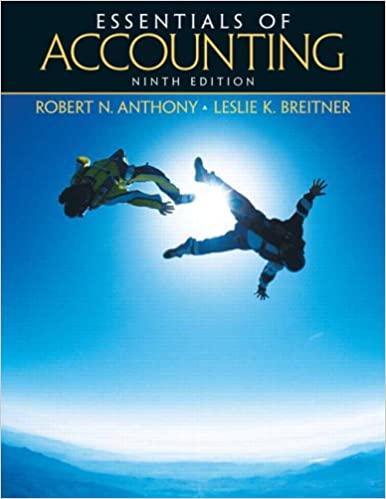Question
For a company you have access to, complete a comprehensive evaluation of the company's internal control procedures. Evaluating internal control involves: Identifying the internal control
For a company you have access to, complete a comprehensive evaluation of the company's internal control procedures. Evaluating internal control involves:
- Identifying the internal control objectives relevant to the organization
- Reviewing pertinent policies and procedures and the documentation standards for each
- Discussing controls with the appropriate levels of personnel
- Observing the control environment
- Testing transactions as appropriate
- Sharing findings, concerns and recommendations with senior management and/or the board of directors
- Determining that the organization has taken timely corrective action on weaknesses that were identified
Use the attached checklist "Corporate Governance and Internal Control Procedure Checklist" to record your evaluation. Add this to a report and summarise your findings. Your report should address all of the points above and should be at a standard for tabling to a Board of Directors.
Your Evaluation should:
Step 1
Document significant transaction classes. According to the Guide to Audit Risk Assessment, significant transaction classes are those in a companys operations that are key to the financial statements because of the volume or dollar amount of the transaction. While auditing a retail business, an auditor may identify cash receipts as a significant transaction class because the company receives cash numerous times throughout the year. Document all significant transaction classes and ask the client to provide a description of the procedures for each class.
Step 2
Obtain and document an understanding of the client's system of internal controls. Ask management how processes are completed. While auditing sales transactions, for example, an auditor may ask who collects cash, when cash is collected and how cash is collected.
Step 3
View and document a sample transaction from each identified transaction class. Use the documentation of internal control to determine if sample transactions correctly flow through the internal control system. For example, an auditor may observe a customer paying cash to an authorized cashier at the time of purchase. She then documents the details of the transaction, such as date and dollar amount, and determines if there were any discrepancies from the documented internal control procedures.
Step 4
Discuss results with management and document changes to risk assessments based on the results. Relate findings to management in a written communication. In addition, document whether the evaluation of the internal control system increased or decreased the risk that a material misstatement could occur in the financial statements.
Where weaknesses are identified by your evaluation, develop internal control procedures to improve performance. Implement the new internal control procedures.
Step by Step Solution
There are 3 Steps involved in it
Step: 1

Get Instant Access to Expert-Tailored Solutions
See step-by-step solutions with expert insights and AI powered tools for academic success
Step: 2

Step: 3

Ace Your Homework with AI
Get the answers you need in no time with our AI-driven, step-by-step assistance
Get Started


